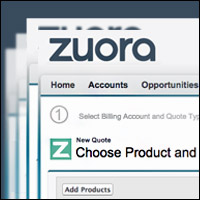
It occurred to me at Salesforce’s Marketing Cloud event held last week in New York that CRM has come full circle in a fundamental way. I was never a fan of labels like “CRM 2.0” or “Social CRM” or whatever else came along, principally because those monikers didn’t signify anything that was new in doing business.
Certainly you could make a case that those names described some new attributes for the traditional set of apps but that just invites a “so what?” The implicit assumption was that you’d know what to do with the stuff, and that’s saying a lot. Most people don’t know what to do with an innovation; those few who do get the title “early adopter.”
It’s a “so what?” because the additions just piled on features and functions when the objective, to me, is always finding ways to do business better, smarter, faster, and with less irritation to the customer.
This takes us right back to the implicit assumption. Most additions to the set didn’t accomplish all that. They may have done some number of the big four requirements, but these days, if you can’t do all of them at once, you are falling behind.
Less Irritation
So, for example, social media added to CRM provided a better, faster and cheaper (than email or direct mail) way to spam or irritate the customer, and I’d give that effort alone a C-minus. Who wants to be irritated?
That’s why I think we’ve come full circle. It feels like 2000, when CRM had a lot of upside and the new-new thing was hosted, or on-demand, CRM — a long time ago. The reason for my thinking is that over the last two years, we’ve seen a rush to market with a large number of new categories of solution types — and most importantly, they pretty much work together.
Taking an increasingly important position in the middle of all this is the analytics revolution. We’ve gotten to the point where we are seeing more than general-purpose tools, and the specificity is driving significant opportunity for CRM users as well as their customers.
The introduction of usable predictive analytics, or machine learning, is helping many businesses get that last part right — less irritation to the customer. Let’s face it, if you can better predict who is likely to want, need, or be interested in a product or service, and if you can focus on that population, then to a degree you are not irritating but informing.
Even better, If you can weed out the customers who have the highest likelihood of not wanting whatever you are messaging, and who are potentially the most likely to be irritated, you will avoid all that — while saving the money you’d waste on being irritating.
More Help
This is all good, but we also need to keep in mind that being helpful — and not being irritating — are defined differently in different contexts, say sales and service. Coming up with a next-best offer based on prior experience, for example, plays differently in sales than it does in service.
In service, you it’s easy to look like you are being helpful — in sales, you can look like you’re desperately throwing things at the wall to see what sticks. That’s one reason analytic apps for specific jobs in the front office will be so important. It is also why I think Salesforce’s announcement of analytic apps on the Wave platform is a big deal.
Wave and its analytic apps are designed to provide analytics support to a variety of applications in the front office, delivering appropriate insight for a particular role. The first app, for sales, is designed to do this and I expect that by Dreamforce — it’s early this year, in September — we’ll see a growing list of analytic apps that help in specific areas like marketing and service as well. That’s not to say there is no analytic support there already — but just wait.
We now can identify audiences by common attributes of need, and we can design specific programs and promotions for them. We can custom-design the journeys these customers will travel with us. All that, plus the fact that we can use machine learning or predictive analytics to help identify what to do in their individual moments of truth, tells me that we’ve turned the corner.
We’ve reshuffled the deck. It’s a new [insert your favorite metaphor here]. We’re in a newfangled CRM era.
A note of caution though: This new era will not be as kind as the old one that enabled many of us to work based on intuition. There’s great freedom in a workplace driven by analytics, but intuition now has to be driven by the information presented by the analytics. It’s a new formulation of people, process and machine for a new era.
























































